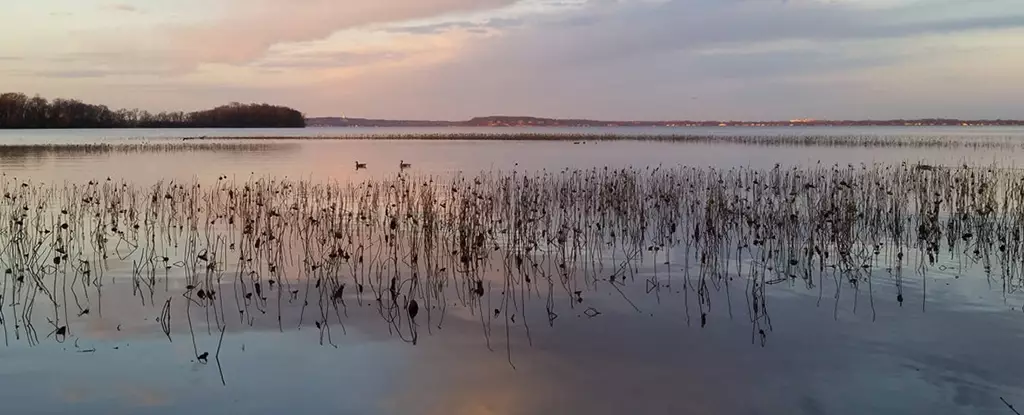Lake Mendota, located in Wisconsin, stands as a natural laboratory for observing the intricate cycles of ecological transformations driven by seasonal changes. This picturesque body of water undergoes profound transformations throughout the year, from a serene ice-covered surface in winter to a thriving ecosystem teeming with life during the summer months, where algae bloom proliferates. The research carried out by scientists from the University of Texas at Austin has shed new light on the evolutionary mechanisms at play within this vibrant microbial community. Their findings expose not only the resilience of bacterial populations but also the dynamic nature of their evolutionary trajectories.
At the core of this groundbreaking study is a comprehensive analysis of 471 microbial samples collected over two decades. The researchers meticulously examined genetic variations within and between microbial species, revealing a fascinating revelation: the continual evolution of bacterial species often leads them to revert back to their previous genetic states as the seasons cycle through. This phenomenon, akin to a video loop, illustrates the fascinating temporal dynamics of microbial life, emphasizing how environmental conditions can trigger rapid evolutionary changes.
Given the short lifespan of bacteria, often only a few days, their evolutionary adaptations can span thousands of generations within a single season. This multiplicity of evolution underscores the extraordinary capacity of microbes to adapt quickly to their shifting environments, ultimately culminating in the seasonal cycles that characterize Lake Mendota.
The study’s analysis examined approximately 2,855 bacterial genomes, uncovering that around 80 percent of them displayed cyclical genetic changes throughout the seasons. As certain environmental conditions favored particular bacterial strains, these strains would rise in dominance, only to be supplanted by others as the year progressed. Remarkably, this pattern of cyclical change repeated itself, resembling a continuous loop rather than a linear evolutionary path.
However, not all microbial species behaved in this manner. Roughly 20 percent exhibited a sustained pattern of genetic change that persisted across decades, illustrating an aspect of evolution that is less reversible. The research indicated notable genetic modifications in bacterial nitrogen metabolism, particularly in 2012, a year marked by unusual heat and drought. This shift highlighted how microbe adaptation is closely intertwined with environmental changes, such as lower nitrogen levels due to reduced algal growth, presenting critical insights into how bacteria respond to extreme weather phenomena.
The researchers employed sophisticated computational techniques, utilizing supercomputing resources to unravel the complex metagenomes from numerous water samples. This advanced method of assembly facilitated an in-depth investigation of the DNA sequences, essentially piecing together the genetic narratives that define each microbial community. As Robin Rohwer, a microbial ecologist involved in the study, aptly illustrated, it is akin to deciphering sentences from multiple books, which constitute the narratives of microbial genomics.
This meticulous method of reassembling genetic fragments allows scientists to paint a clearer picture of microbial diversity and its responses to ecological changes, providing crucial data that could inform conservation strategies.
The implications of this research reach far beyond the shores of Lake Mendota. By shining a light on the interplay between ecological and evolutionary processes, the findings challenge the traditional view that these factors operate independently. Understanding which bacterial species dominate during varying climate conditions is vital for predicting how lakes manage carbon levels and maintain aquatic food webs as global temperatures rise.
As climate change continues to reshape ecosystems worldwide, further exploration into the dynamic microbial communities will be essential. The reciprocal relationship between microbial adaptation and climatic shifts offers new perspectives on managing the impacts of environmental change. Such insights will be pivotal not only for understanding ecological integrity but also for fostering the resilience of ecosystems facing unprecedented change. Hence, research at places like Lake Mendota may serve as essential entry points for future studies investigating the broader implications of microbial evolution in an increasingly volatile world.


Leave a Reply